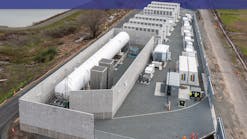Battery Energy Storage: Are All the Bugs Out?
Major energy project developers and utility buyers are on the same page regarding utility scale renewable energy projects like wind and solar. The projects are good for diversification and, in the right circumstances, appear increasingly more economic than fossil fuel alternatives. In fact, they are sufficiently economic to support relatively expensive backup battery storage capability and still beat out other options. An example is the 700-MW wind/solar/battery project NextEra recently committed to build for the Western Farmers Electric Cooperative (WFEC). Since major developers are offering and sophisticated buyers are committing to purchase the output from projects with a significant storage component, does this mean the technology risks associated with larger scale battery energy storage have been resolved?
Batteries were invented in 1800, so we’ve had over 200 years to study and perfect basic battery attributes like cycle life, efficiency, life-cycle costs, and energy density as well as health and safety issues such as fire risk and outgassing of hazardous components. However, many of the battery technologies vying for grid storage applications today have been in use for about 20 years and at grid scale for a much shorter period. The most prominent battery classes in the bulk storage arena include solid state batteries and flow batteries. Lithium ion (Li-ion) and sodium sulfur (NaS) are commonly deployed solid-state batteries seeing service in grid scale applications. Redox flow batteries (RFB) represent the most common flow battery configuration and, according to the Energy Storage Association, are suitable for energy storage applications with power ratings from 10s of kilowatts to 10s of megawatts and storage durations of 2 to 10 hours.
The energy trade press reports every day that energy storage system (ESS) applications in the power sector are growing rapidly in residential, commercial, and industrial facilities. The growth in some sectors has reportedly been more rapid than the development of standards by officials tasked with ensuring safety, particularly where residences and public spaces like commercial establishments are involved. We’ve all heard about fires and even explosions caused by battery equipped hover boards and occasionally laptops, cell phones, and electric vehicles (EVs). However, when we start wiring battery systems in-mass into homes and businesses, and we plan to routinely connect and charge EVs in homes and public spaces, we want to ensure the problem is not an endemic one.
Thankfully, these issues have the full attention of the National Fire Protection Association (NFPA). Some NFPA standards are relevant to ESS, including NFPA 110, Standard for Emergency and Standby Power Systems and NFPA 111, Stored Electrical Energy Emergency and Standby Power Systems. In addition, NFPA is working on NFPA 855, Standard for the Installation of Energy Storage Systems, which is currently in development. The organization also offers basic training on how to deal with photovoltaic (PV) and ESS, and is involved with ongoing research in related areas.
Parts of the world may be ahead of the United States in ESS deployment in certain sectors. Even in countries where rapid deployment is occurring, there are signs that all the bugs are not resolved. ESS fires occurred at a reported 23 battery energy storage installations in South Korea during 2018. While formal reports have not been provided, available information from investigations of utility and industrial system accidents there indicate inappropriate installation and faulty battery management systems for many of the incidents. The government requested that ESS be taken offline until investigations were concluded in that country.
The U.S. record regarding reported grid scale ESS incidents is better than South Korea’s, but not without incident. There have been at least three major storage related fires at U.S. installations. In 2012, a fire destroyed the 15-MW battery storage facility at the Kahuku wind farm in Hawaii. This same facility had minor incidents in 2011 and 2012 before the major fire. The fires were attributed to faulty capacitors and inverters in the battery charging system. Arizona Public Service (APS) experienced a fire and explosion at a 2-MW battery Li-ion storage system in April 2019. The battery system, supplied by Fluence, is installed at a company substation to help control solar variability on the local system. The reason for the failure is still under investigation. APS also experienced a 2012 battery fire in a 1.5-MW system supplied by Electrovaya for a substation in Flagstaff. Despite these mishaps, APS remains committed to a plan announced in February to deploy 850 MW of battery storage in the coming years.
Focus by the NFPA and even concerns in the battery industry after the problems in South Korea have centered on Li-ion technology because it has become the technology of choice for a broad range of applications primarily because of price reductions. Reports indicate Li-ion battery costs have declined more than 70% in the last five years and are expected to continue to decline. The reasons include a rapid increase in manufacturers and new, more cost-effective battery chemistries. Both facts are reasons for optimism as well as a continued high level of care as more utilities and other users embrace ESS technologies.
The rapid increase in ESS project announcements in the power industry indicate utilities, developers, and investors have come to terms with the project risks. This confidence may be the result of: ensuring certification of new applications and chemistries by companies like DNV-GL; use of long-term product warranties covering defects and performance; negotiating engineering, procurement and construction (EPC) contractor wraps on storage project installation and operation; and carefully designed monitoring, control and maintenance responsibility for storage systems. Whatever the reasons for comfort, the power industry needs to remain vigilant as we gain experience with the rapidly evolving ESS technologies now on the scene. Additional public education regarding ESS safety also would be of value.


